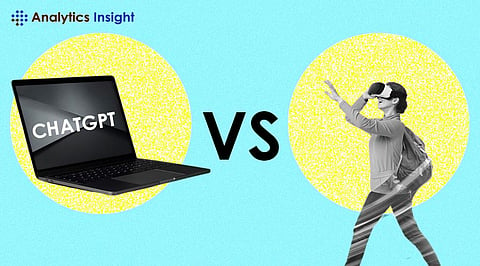

Virtual reality (VR) technology, when combined with ChatGPT, has the potential to completely transform training and education by enabling immersive, interactive learning environments that have never been seen before. Through the integration of ChatGPT with VR/AR environments, students can participate in lifelike simulations, obtain individualized education, and investigate intricate ideas in a more facile and captivating manner. Let's explore how ChatGPT tools and VR might improve learning in a variety of fields.
Imagine interacting with an AI-powered virtual character in a virtual reality setting as you learn a new language. ChatGPT can function as a language tutor by offering immediate feedback, responding to inquiries, and holding interactive discussions. Within the immersive VR environment, learners can practice language in real-world circumstances like placing an order at a restaurant or negotiating a commercial deal.
It might be difficult to give medical education in a standard classroom setting since medical training frequently requires practical experience. Through the integration of ChatGPT with VR, medical students can experience diagnosing and treating patients in lifelike scenarios. ChatGPT can function as an online patient, displaying symptoms and reacting to the activities of the students. Students can learn important skills and hone their critical thinking abilities in a controlled and safe environment with this interactive training.
Virtual reality enables us to virtually visit historical places and cultural landmarks without leaving the comforts of home. Through the integration of ChatGPT into these virtual experiences, students can have engaging discussions with virtual tour guides or historical personalities. Students studying ancient civilizations, for instance, can ask questions about Cleopatra's life and reign in a virtual conversation with the virtual queen. History becomes more interesting and remembered when VR and ChatGPT are used together.
Soft skills, like leadership, teamwork, and communication, are essential for success in a variety of fields. Learners can practice and hone these abilities in realistic circumstances through VR simulations augmented by ChatGPT. Aspiring managers, for instance, can take part in virtual team-building activities where ChatGPT assumes the roles of team members with various personalities and viewpoints. With interactive dialogues and feedback, learners may make decisions, overcome obstacles, and develop their soft skills.
Learners with specific needs can also benefit from ChatGPT in conjunction with VR. Virtual worlds, for instance, can offer a secure and regulated setting for kids with autism spectrum conditions to practice social interactions. Through engaging discussions and tailored comments, ChatGPT can operate as a virtual peer, assisting these learners in the development of social skills. For people with a range of learning requirements, this mix of technology provides a welcoming and inclusive learning environment.
This potent fusion of ChatGPT with VR/AR opens up a world of fascinating possibilities.
Personalized Learning: ChatGPT creates customized learning routes based on the advantages and disadvantages of each learner. To ensure that their learning experience is maximized for their particular needs, students receive personalized learning content, focused feedback, and real-time support.
Gamification of Education: Interactive quests and difficult riddles replace dry textbooks in Virtual Reality and Augmented Reality environments, enhancing the learning process. Students explore historical periods while solving mysteries, examine virtual organs by playing instructional games, and face hard mathematical challenges through immersive, gamified experiences.
International Cooperation: Through shared virtual classrooms, VR/AR breaks down geographical boundaries to link students from all over the world. Within the secure atmosphere of virtual reality, picture yourself working with colleagues from different nations on a simulated Mars trip or participating in real-time cultural exchange programs across continents.
Educator Empowerment: ChatGPT functions as a digital assistant, providing educators with on-demand assistance. It creates individualized lesson plans, adjusts instruction to meet the needs of each student, and offers thorough performance feedback. This frees up teachers' time so they may concentrate on providing individualized instruction and fostering critical thinking abilities.
Virtual reality and ChatGPT integration open up intriguing new training and educational opportunities. This strong mix enables learners to engage in immersive and engaging experiences, fostering active learning, personalization, and skill development. We may anticipate many more cutting-edge uses of ChatGPT and VR in education as technology develops, which will ultimately change how we learn and become knowledgeable.
Join our WhatsApp Channel to get the latest news, exclusives and videos on WhatsApp
_____________
Disclaimer: Analytics Insight does not provide financial advice or guidance on cryptocurrencies and stocks. Also note that the cryptocurrencies mentioned/listed on the website could potentially be scams, i.e. designed to induce you to invest financial resources that may be lost forever and not be recoverable once investments are made. This article is provided for informational purposes and does not constitute investment advice. You are responsible for conducting your own research (DYOR) before making any investments. Read more about the financial risks involved here.
